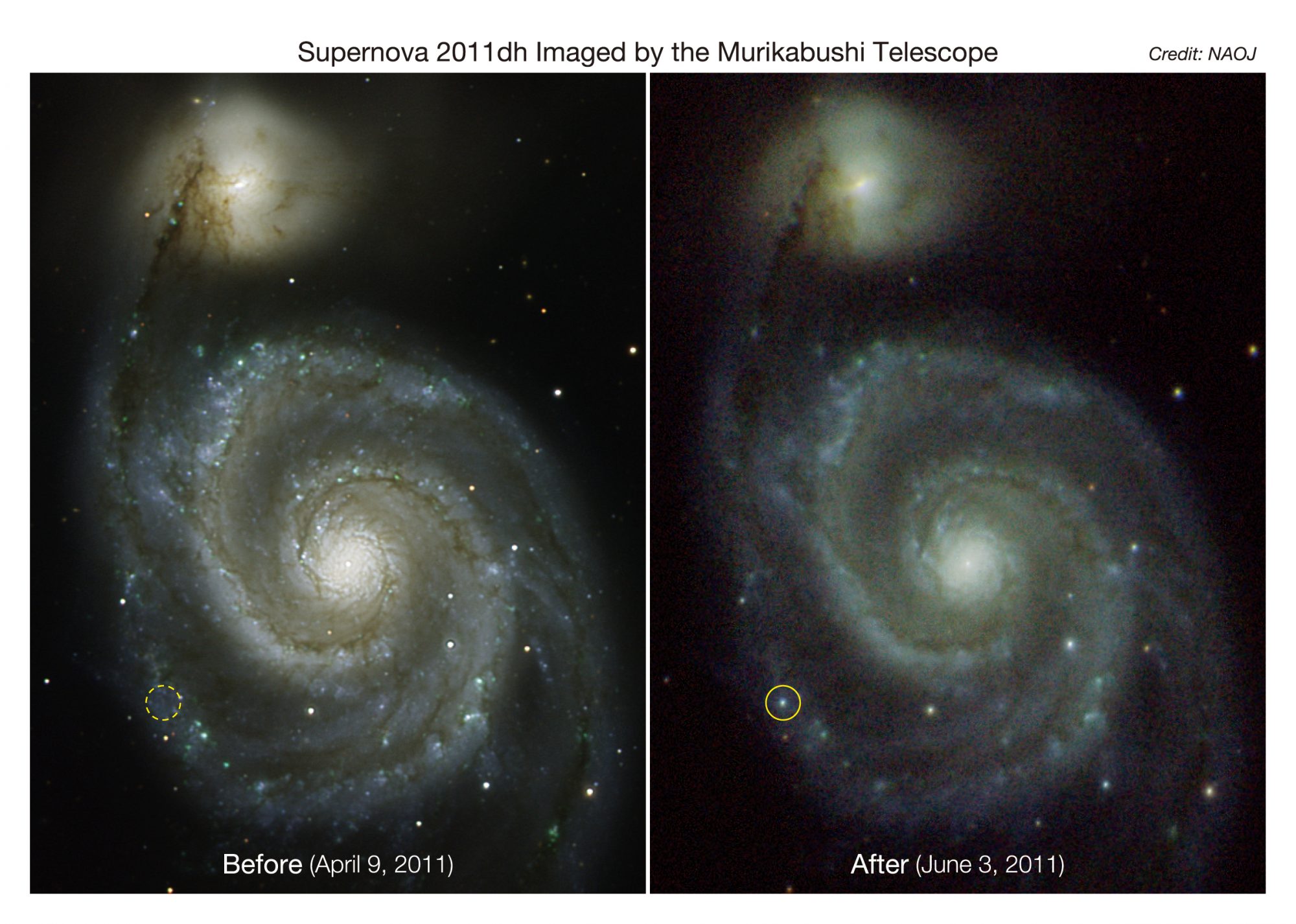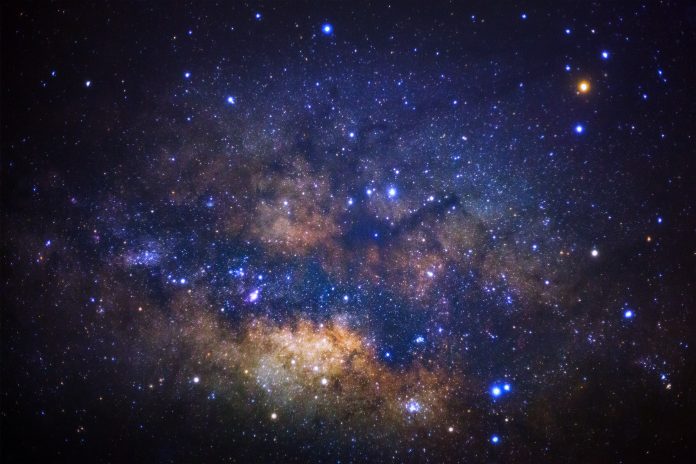NAOJ Director General Saku Tsuneta explains Japan’s strategy of using both large and small facilities for multi-messenger astronomy
On August 17, 2017, gravitational wave observatories issued an alert triggered by the detection of tiny distortions in space-time produced by the merger of binary neutron stars. Telescopes around the world including the Subaru Telescope, Japan’s flagship 8.2-m optical infrared telescope, and the InfraRed Survey Facility (IRSF) led by Nagoya University, a member of Japan’s OISTER (Optical and Infrared Synergetic Telescopes for Education and Research) network of small telescopes, conducted follow-up observations and identified the optical and infrared counterparts of the gravitational wave source. It was a kilonova, a theoretically predicted phenomenon associated with neutron star mergers. The kilonova simulation had been conducted by the dedicated astronomy supercomputer ATERUI at the National Astronomical Observatory of Japan (NAOJ). The close match between the simulation and the observations showed that a kilonova produces 10,000 times the mass of the Earth worth of rare earth elements and precious metals such as gold. This helps explain the origin of these elements which are now vital to modern society.
This was a watershed in the emerging field of multi-messenger astronomy, discoveries enabled by the combination of unconventional observatories, optical/infrared telescopes, and simulation. And Japan played multiple critical roles in the dawning of this new field.
Multi-messenger astronomy
Multi-messenger astronomy involves observing the same object through different signals ranging from radio waves to visible light and gamma rays, as well as non-electromagnetic messengers such as gravitational waves and neutrinos.
Japan’s efforts in non-electromagnetic observations have been recognised by two Nobel Prizes. Masatoshi Koshiba shared the Nobel Prize in Physics 2002 for the detection of cosmic neutrinos using Kamiokande. Takaaki Kajita’s work with the successor instrument Super-Kamiokande showing that neutrinos have mass was recognised by the Nobel Prize in Physics 2015. Expectations are high for the next generation instrument, Hyper-Kamiokande with a sensitivity much higher than the current facility, expected to start observations later this decade.
Located in the same research complex as Super-Kamiokande you can find KARGA, Japan’s large-scale cryogenic gravitational wave telescope. Gravitational waves are completely unlike either electromagnetic waves or neutrino particles; they are ripples in the fabric of space-time itself caused by events such as binary black hole mergers. KAGRA is preparing to participate, along with Advanced LIGO and Advanced Virgo, in the next international observing run O4 scheduled for December 2022. KAGRA’s participation will enable higher directional precision, facilitating follow-up optical observations to find the sources.
As the world’s first subterranean cryogenically-cooled large-scale gravitational wave telescope, KAGRA has been trying to prove the advantages of an underground location and cryogenic optics. Now “cold” and “buried” may have become the standard for next-generation gravitational wave telescopes under consideration like Europe’s Einstein Telescope and the U.S. Cosmic Explorer.
The optical/infrared facet of multi-messenger astronomy requires telescopes with a wide field of view, high sensitivity, and scheduling flexibility; three normally contradictory requirements. The unique design and instrumentation of the Subaru Telescope combine a wide field of view with high sensitivity. Japan’s OISTER network provides the scheduling flexibility required for rapid follow-up and long-term monitoring of objects which evolve with time.
Networking university-owned small telescopes
OISTER is a network of thirteen 1-4m class optical and infrared telescopes operated by Japanese universities and NAOJ. NAOJ led the efforts for networking the scattered telescopesin close collaboration with nine universities in Japan. Notable members include Kyoto University’s 3.8m Seimei Telescope, Hiroshima University’s 1.5m Kanata Telescope, NAOJ’s own Murikabushi Telescope at Ishigakijima Astronomical Observatory, and Nagoya University’s aforementioned 1.4m IRSF located in South Africa.
The Seimei Telescope uses segmented mirrors; instead of one large mirror, 18 petal-shaped mirror segments are held in precise alignment to collect the light from space. In addition to science observations, the Seimei Telescope is also helping to develop key technologies with low costs for future medium-size segmented-mirror telescopes.
The Kanata Telescope responded when the U.S. National Science Foundation’s IceCube neutrino detector issued an alert triggered by a high-energy cosmic neutrino on September 22, 2017. The neutrino came from the same direction as a known jet from a supermassive black hole in a distant galaxy. This strongly suggests that such jets are the sources of high-energy cosmic neutrinos. Among the observing facilities, the Kanata Telescope was the only one to report detecting polarisation in the light from the source, providing a unique insight into the phenomenon.

Mega-constellations and astronomy
As optical telescopes are entering the new age of multi-messenger astronomy, there are concerns over the future of astronomy. Private industry space entrepreneurs are planning to launch mega-constellations consisting of thousands of small satellites. These mega-constellations have the potential to bring internet access to underserved communities around the globe, but because these satellites shine in the night sky due to the sunlight they reflect, they may also have the potential to impair astronomical observations. The International Astronomical Union (IAU) and other organisations have issued statements expressing their concerns over this issue.
Internet companies are trying to find ways to peacefully co-exist with astronomy. SpaceX treated one of its Starlink satellites with a special dark paint to reduce its reflectivity. The Murikabushi Telescope, a member of OISTER, had been observing this satellite after its launch and confirmed that the paint does reduce reflectivity by about half. OISTER’s work with mega-constellation satellite observations, together with other observatories around the world, is helping to ensure that we preserve the dark night skies so the next generation can continue meaningful ground-based astronomy.
Science and education through small telescopes
Perhaps one of the most important aspects of this broad collaboration through university-owned small telescopes is that it gives young researchers a chance to get involved and play a meaningful role in real, cutting-edge science. OISTER research has already produced 148 Master’s theses and 33 PhD theses over the ten years of its activities.
Japan is active on all fronts of multi-messenger astronomy, from the Subaru Telescope and giant underground facilities for neutrino and gravitational wave observations to small optical telescopes scattered across Japan and overseas. The nature of multi-messenger astronomy requires such diverse facilities, large and small, conventional and unconventional; and Japan’s location in the Asia-Pacific region complements facilities in the Western Hemisphere. Japan offers a suite of facilities with the networking of small telescopes to increase time-domain coverage at minimum cost to the international community.
Please note: This is a commercial profile
© 2019. This work is licensed under CC-BY-NC-ND.











